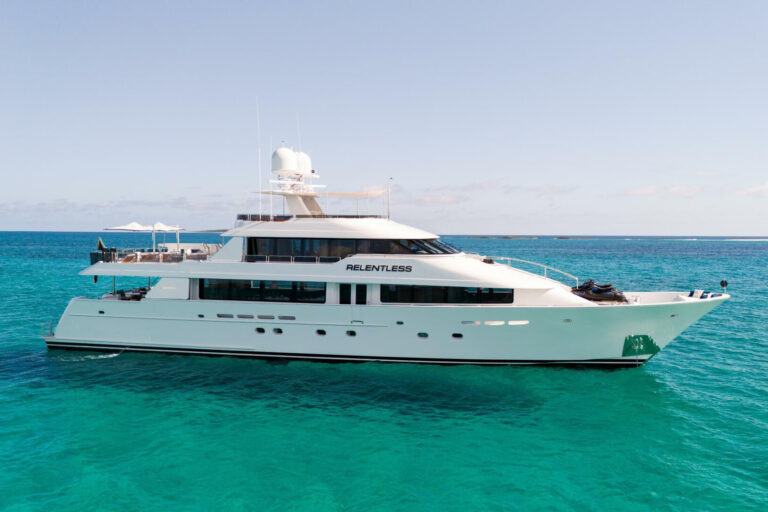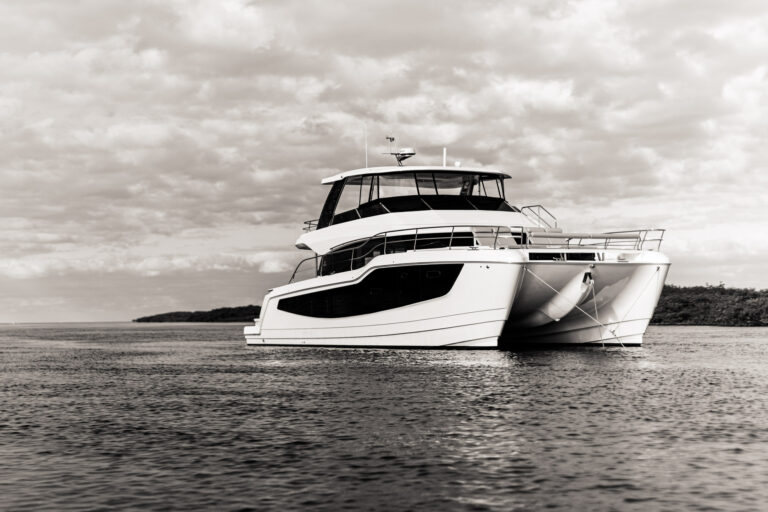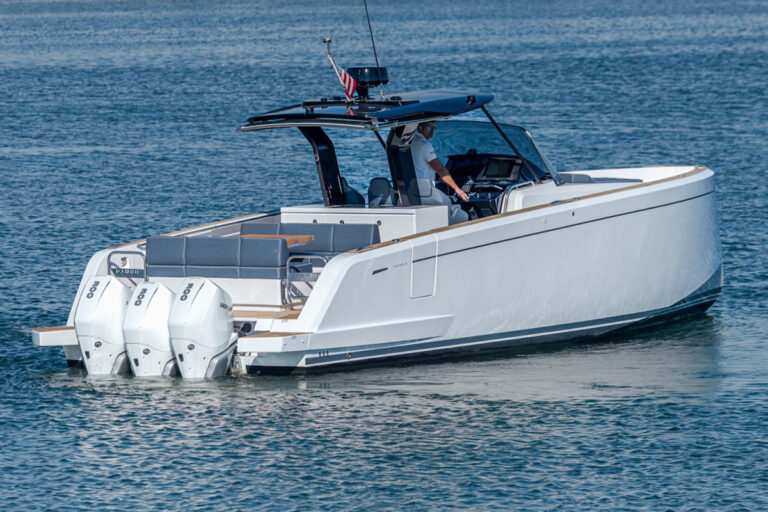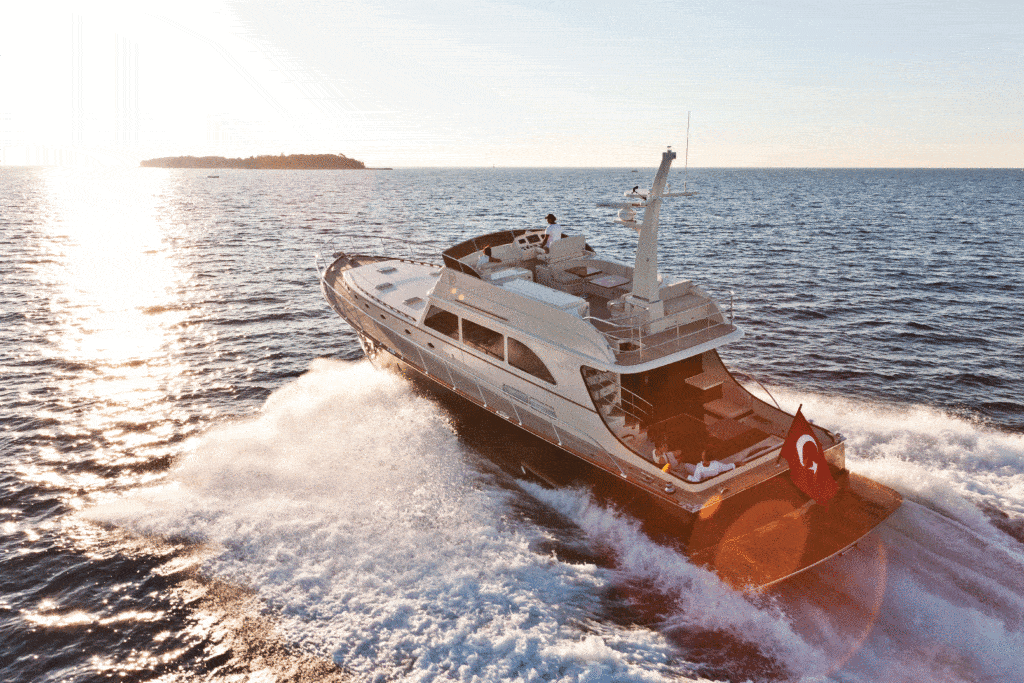
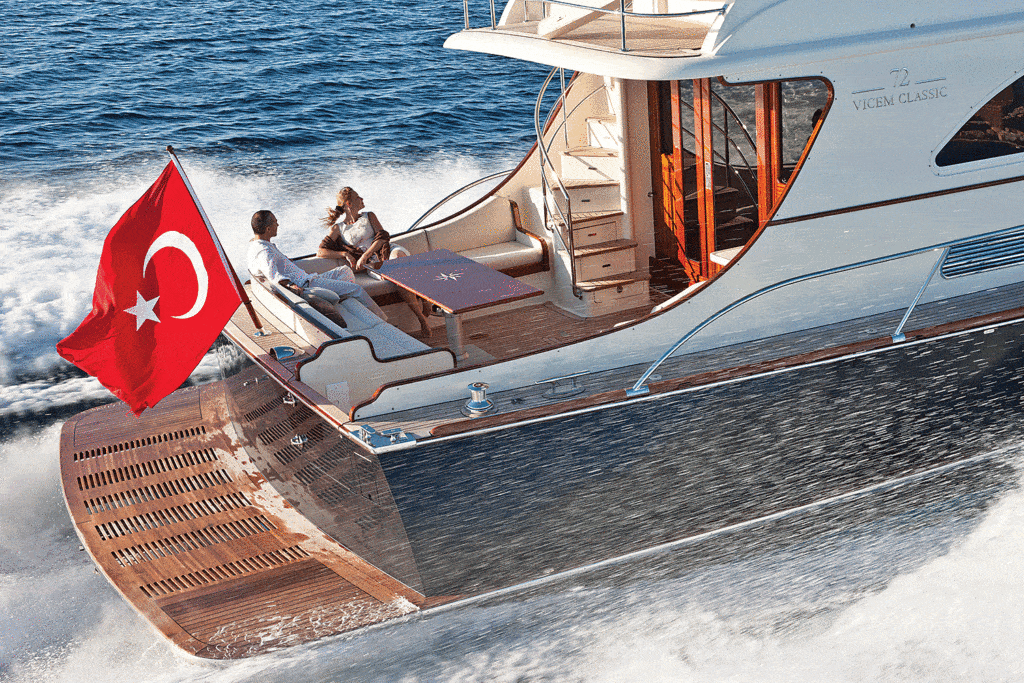

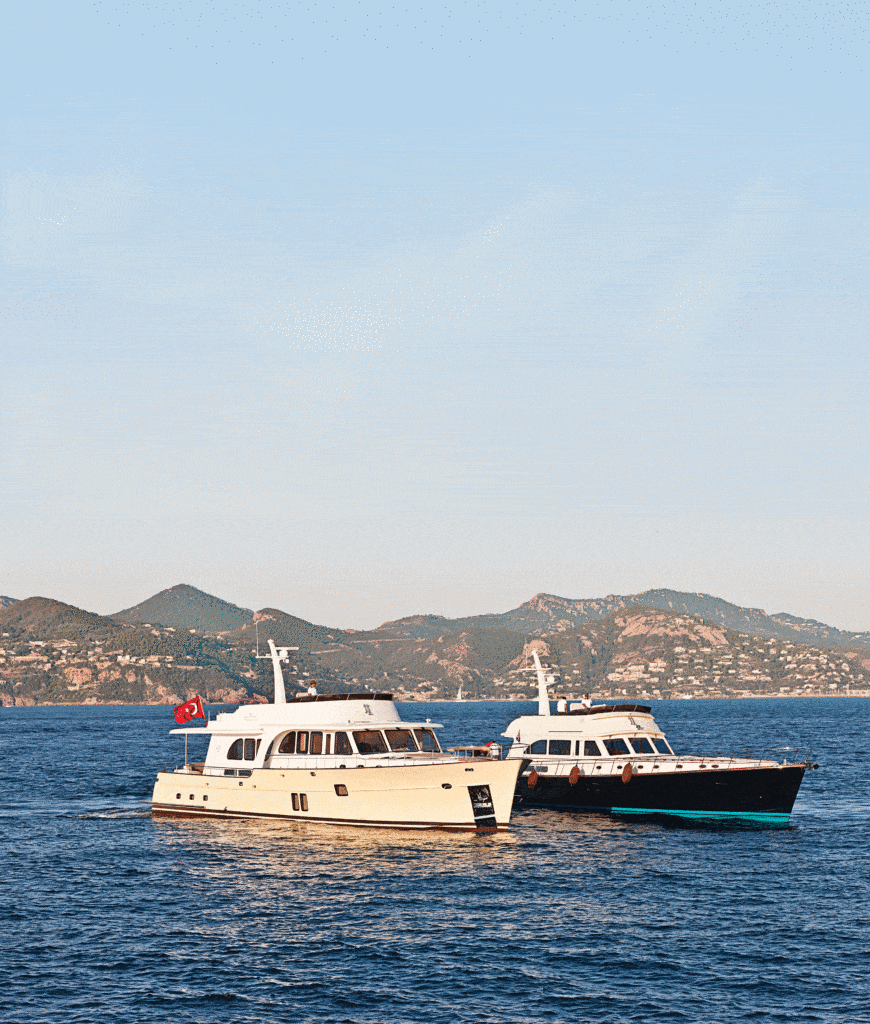
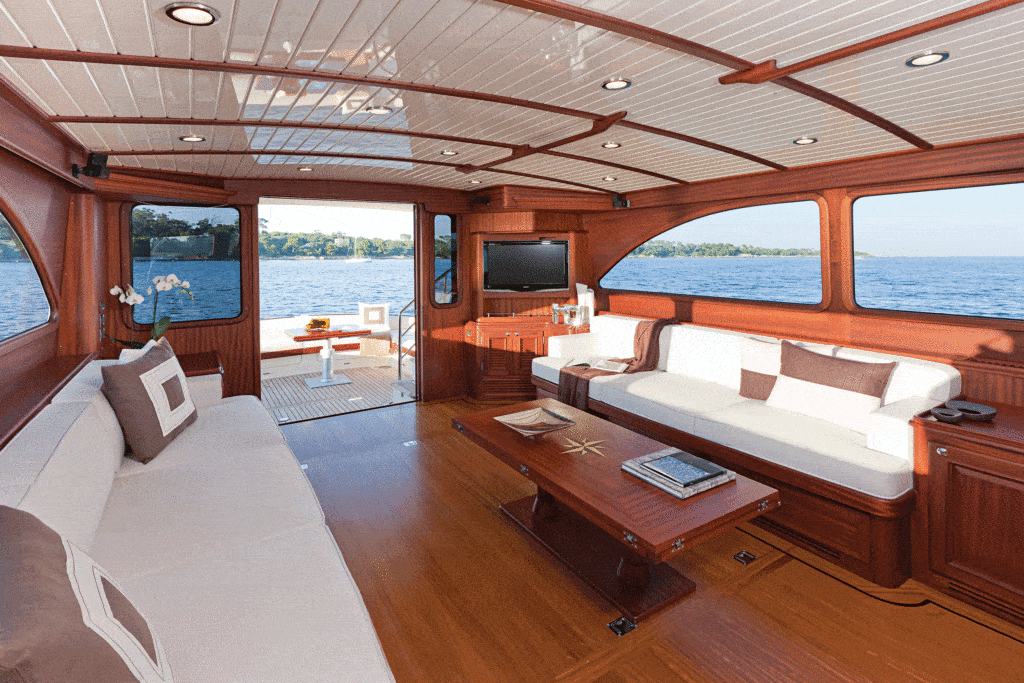

Test Conditions:
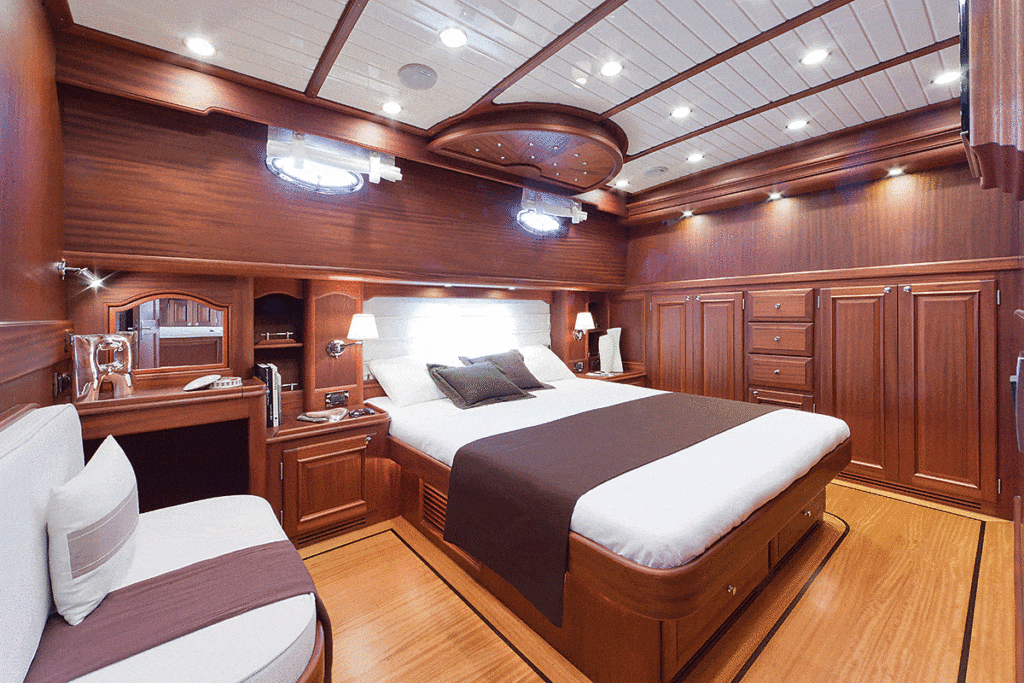

I often cruise in Fort Lauderdale aboard sparkling new yachts of every size and description, and the reaction of the residents usually lies somewhere between aloof and blasé. After all, what’s the big deal? It’s just another multimillion-dollar yacht, much like all the rest in this “Venice of America,” this tapestry of interwoven waterways and canals.
My recent trip aboard [Vicem Yachts][]’ 77-foot Classic Flybridge model was different. At the bridges and along the shore, in backyards and parks, heads turned and people paused to stare our way, elbowing their friends to take a look too. At Florida Bend, we idled to let the beamy Jungle Queen tour boat take the turn first, with many of her 500 guests snapping photos of the 77 to show the folks back home.
All the way down the New River and Intracoastal Waterway, out the inlet and into the blue Atlantic, no one could ignore this work of floating art, lovingly sculpted in mahogany, teak and sapele by skilled craftsmen on the other side of the world. With the Mediterranean Sea on one side and the Black Sea on the other, Turkey’s Vicem Yachts has craftspeople whose arteries seem to flow with salt water.
The Classic, like many other Vicem models, is built on a hull cold-molded of three to four layers of mahogany. The wood is harvested from sustainable forests and is tied together using West System epoxy resins in a process perfected and proved over several decades. In structural tests I’ve witnessed, it’s almost always the wood fibers that tear apart before the resin bonds let go.
The result of Vicem’s system is a lightweight structure that is strong and stiff, built from a natural material that provides inherent insulation against noise and temperature. Finished clear, as it is in many places aboard the Classic, it is also incredibly beautiful, a reminder of what yachts once were in the days before steel, aluminum and fiberglass, the last being a material purportedly referred to by yachting icon L. Francis Herreshoff as “frozen snot.”Don’t mistake traditional styling and finish for old-fashioned, though. Just as cold-molding creates a whole different animal from caulked planks, so does the other technology aboard the Classic.
The hard-chine hull’s 17-degree deadrise at the Mahogany and teak add warmth to the salon transom tapers to a very fine bow, one that cleaved the chop off the coast during my test without pounding, with minimal spray and with little bow rise, slicing through rather than bouncing over the waves. The Classic was quite responsive to both helm and throttles, and banked nicely, with just a moderate inboard list on turns.
A moderate degree of flare provides the reserve buoyancy needed for heavier seas, lifting the bow when necessary. Her twin screws, supplied and tuned by Lauderdale’s renowned Frank & Jimmie’s prop shop, along with Side-Power bow and stern thrusters, ensured excellent maneuverability around the marina. For added comfort, TRAC zero-speed stabilizers reduce rolling underway and at rest.
The remainder of the outfit list is just as impressive, both for its completeness and for the quality of the suppliers. There are no “anonymous” brands here, only the best of American and European marine equipment, including MAN, Onan, Racor, Sealand, Cruisair, Fireboy, Lofrans, Bosch, Opacmare and many other familiar names. Vicem provides a one-year full warranty on its yachts, as well as a five-year warranty on the hull.
The traditional look of the 77 Classic’s profile is echoed by her interior, with glossy-white planks, trimmed in teak, lining the overhead. The centerline sea rail will be of great assistance in heavy weather, a consideration often overlooked on many modern yachts. Varnished planks line the house sides to reinforce the classic look, and cabinet doors include real louvers for ventilation. Attractive arched cabin doors are crafted of solid wood, and specialty latches prevent rattling underway. The exterior deck is finished in raw teak, surrounded with a brightly finished toe rail capped by stainless-steel railings.
Should any of these details not be your cup of tea, however, each Vicem yacht can be custom built. As Capt. Jim Varela guided us through the waterways, Turan Ozbakir, Vicem’s U.S. manager, guided me through Vicem’s story. He assured me that the builder is willing and able to handle any reasonable request. Each client is assigned a naval architect and a designer at the outset of a project, both to assist clients in achieving their dreams and to steer them away from ideas that might prove problematic later, whether in construction or in operation.
My test boat was the three-stateroom model with the flying-bridge option. The visibility for maneuvering from the lower helm was excellent, but the bridge further enhances that capability. It also adds space for guest enjoyment, with double helm and companion seats as well as a bar with grill and a large U-shaped settee to starboard, where two tables can expand with a central filler. A Bimini top is optional, and the centerline mast folds down to reduce air draft.

The salon on this 77 featured an extra-long settee to either side, but the standard layout includes a dinette forward as well. Double helm and companion seats at the lower helm mirror those on the bridge. Her galley is down a few steps, but because of the trunk-cabin configuration and the fact that the galley lies largely under the windshield, it feels open and is bathed in sunlight. The two larger guest staterooms, one at the bow and one amidships, are nearly equal in size. It’s actually difficult to say which is the master and which is the VIP. Both have queen berths and en suite heads. A third cabin to starboard has twin berths and two pullmans. It is served by a day-head with shower directly across the passageway. The decor of each stateroom mimics the salon, with glossy-white overheads and lots of warm wood. Each stateroom has at least one hatch and opening port, so light and fresh air are plentiful.
The engine room is spacious and serviceable. Sight gauges on the deep tanks at the forward bulkhead give an indication of tank levels at a glance, and down-angle reduction gears lower the height of the engines, making possible the Classic’s low outboard profile. Details confirm Vicem’s dedication to safety, with double clamps on hoses and triple clamps on the exhaust bellows. There are both Fireboy and seawater firefighting systems, and emergency bilge suctions from the engines supplement the Rule and Jabsco pumps provided for routine use. The crew cabin, abaft the engine room, has two entries for safety.
If you’re the type of owner who savors the anonymity that comes with owning a plain-vanilla yacht that looks like so many others, the Vicem Classic may not be for you. However, if you appreciate the best in traditional design and don’t mind a few admiring glances and a question or two as you enter a new marina or anchorage, take a look at the Vicem 77 Classic Flybridge and see if she doesn’t bring a smile to your face.
| Specifications | Builder Supplied Numbers |
|---|---|
| LOA: | 76’9″ |
| BEAM: | 18’5″ |
| DRAFT: | 5’7″ (full load) |
| DISPL: | 102,500 lb. (full load) |
| FUEL: | 1,744 gal. |
| WATER: | 344 gal. |
| DEADRISE: | 17 degrees |
| ENGINES (std.): | 2 x 900 hp MAN diesels |
| ENGINES (tested): | 2 x 1,500 hp MAN diesels |
| PRICE: | On request |






